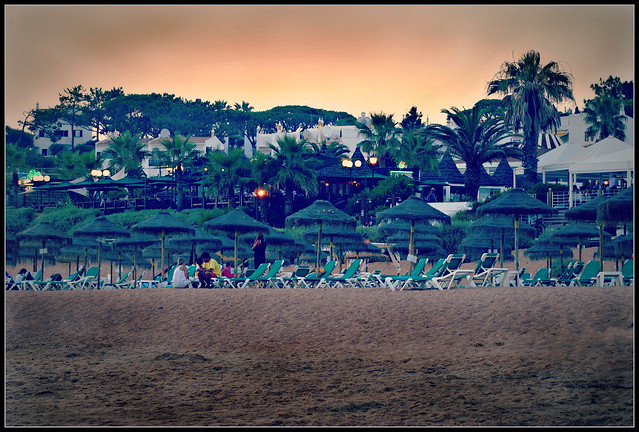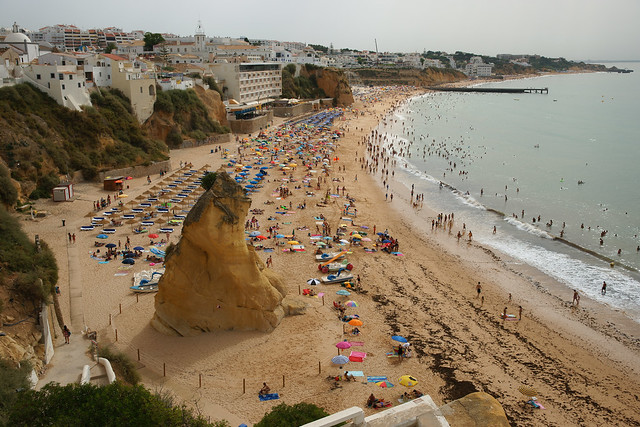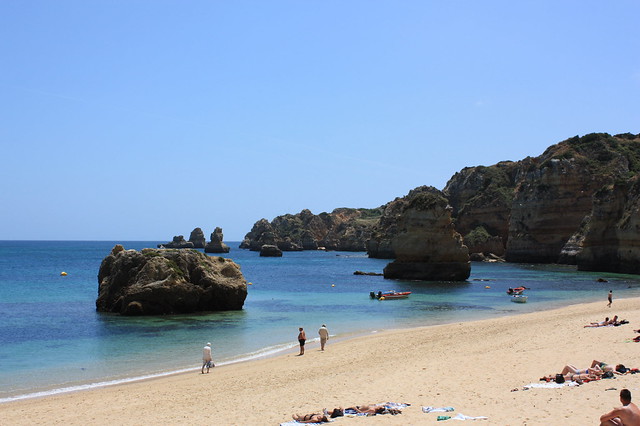Bathed in seemingly eternal sunshine, this southern Portuguese region has some of the most beauteous beaches and coastline in all Europe, featuring everything from coral reefs to rugged cliffs. Despite the huge amount of tourism the Algarve attracts, much of the region has retained its charming links to traditional and historic Portugal, both in the architecture and the geography – there are still plenty of drowsy and peaceful villages to be found outside of the bustling and cosmopolitan resorts.
Albufeira
Far more than just beaches and sparkling nightlife, Roman and Moorish occupations of many centuries past have ensured Albufeira’s landscape is filled with a wealth of fascinating ruins and almost-intact bridges, fortifications and castles. However, the two things merge in the Old Town, where the picturesque cobbled streets are well-trod by pleasure seekers in search of good food, cool drinks and high times after sundown. Seafood – particularly barbecued seafood – is here a speciality, Albufeira having been a fishing port for many decades before tourism became the main concern. After dining, you can take your pick of the bars – most of which are open until around 4am in summer and 2am in winter.
There are two main beaches, ideal for families and couples alike, and both beaches have custard-coloured sands and sparkling turquoise seas. Boat trips, diving excursions and other seafaring jaunts leave from the marina, which is flanked by gorgeous candy-coloured buildings and yet more restaurants selling steamed shellfish stew – a local favourite.
For a glimpse of the area’s ancient history, take a trip to Castelo de Pardene and the Tower of Medronheira, which was raised in the 16th century as a point from which to be on the lookout for potential ransackers and marauding pirates.
Faro
The region’s capital since the 16th century, the centre of Faro extends out from the walled old town and is compact enough to traverse on foot. If you’re after culture and history, there is the Archaeological Museum which is housed in a 400-year-old convent and features a stunning Roman mosaic.
Dining in Faro is good and inexpensive – try the salt cod at Mesa Dos Mouros. If shopping is your thing, wood carvings and ceramics are on sale in the little traditional shops and in the summertime, the nightlife is more than plentiful (the town is a little more sedate out of season).
Lagos
Though buzzing with restaurants, bars, beaches and cafes, Lagos is also the heart of the country and region’s key historic centre too, with a history dating back millennia and featuring both Neolithic monuments and medieval city walls.
The beaches here are white and sandy and set in coves or tucked in between striking cliffs and rocks, meaning they’re sheltered from buffeting sea breezes, allowing for tranquil waters.
There are various protected areas in Lagos, such as the Protected National Forest of the Baron of St John, which features campsites and indigenous strawberry trees from which a (very strong) local alcoholic beverage is made. Other local specialities include almond and fig cookies, moscatel wine and various handcrafts.





people cats
Sunday 29th of January 2017
I trupy appreciate your piece of work, Great post.